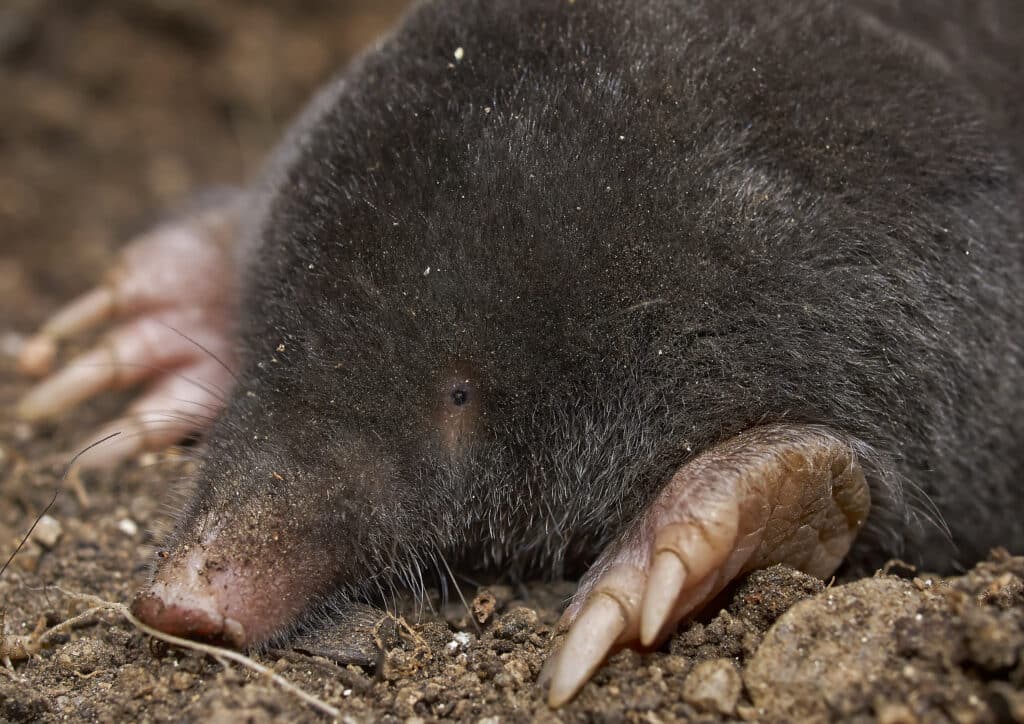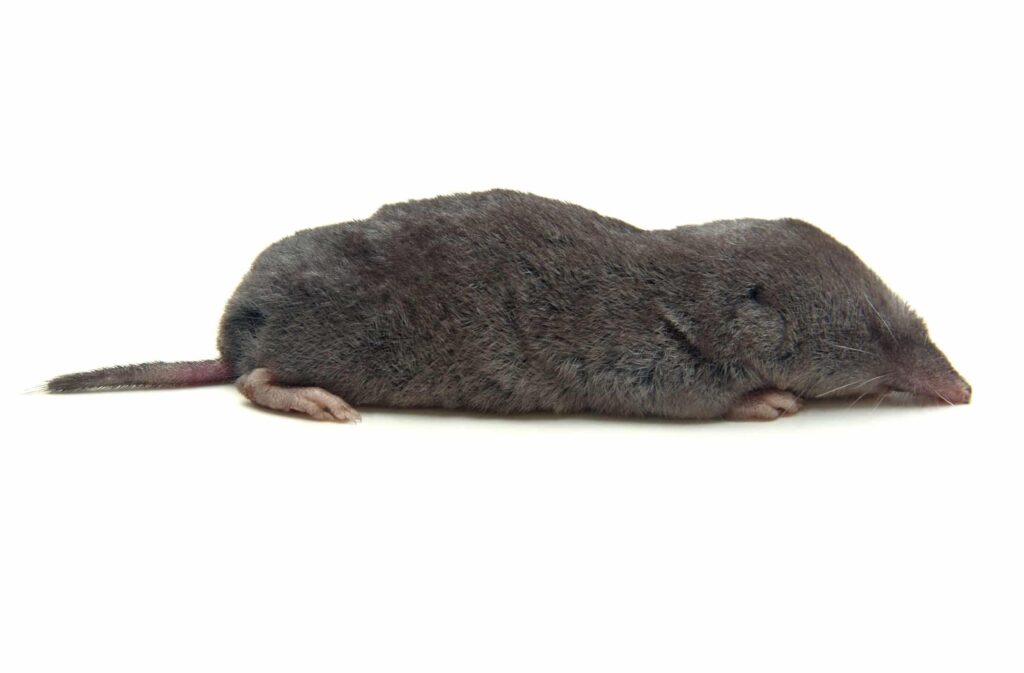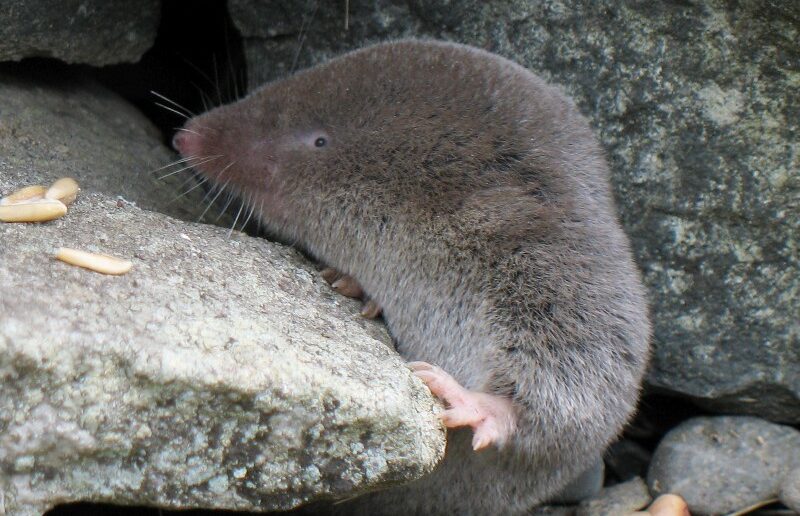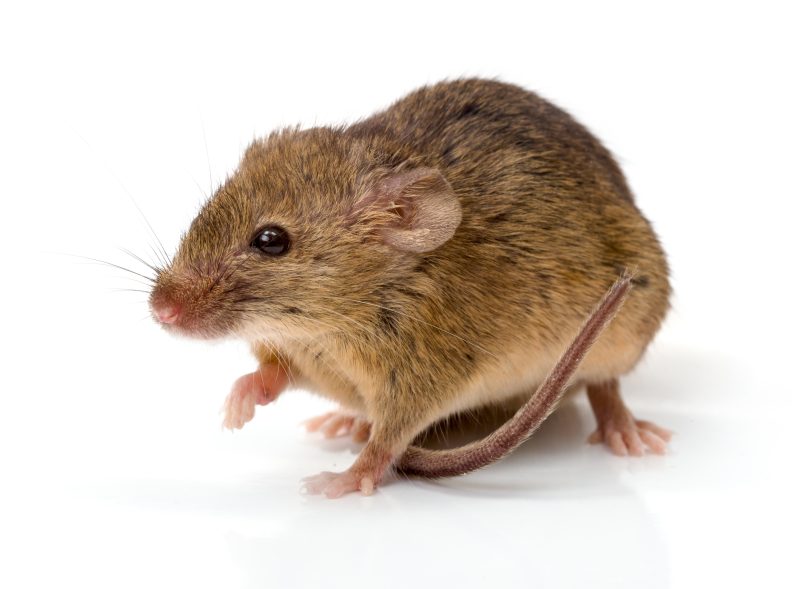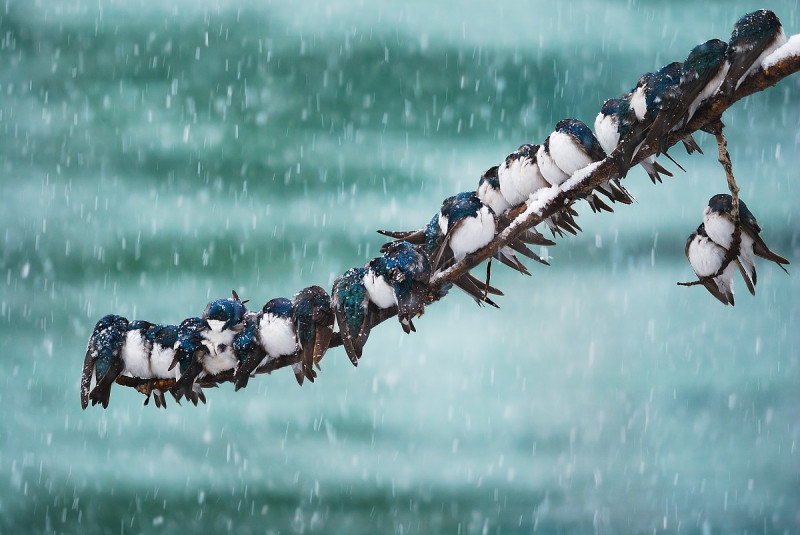These two animals might not seem to be related, but they are. And one or both may live in your yard. You might not notice shrews out there, but moles definitely draw attention.
Moles are small mammals belonging to the family Talpidae. There are seven species in the United States. They evolved from primitive insectivores millions of years ago, adapting to a subterranean lifestyle. With powerful forelimbs and large claws, they create underground tunnels and burrows in search of earthworms, insects, and larvae, emerging only occasionally. They rely on a keen sense of smell and touch to locate prey.
They vary in size and habitat preference. Depending on the species, they’re 4 to 8 inches (10–20 cm) in length, with soft fur ranging from grayish to brownish hues. Despite their diminutive size, moles play vital roles in ecosystems by aerating the soil and controlling insect populations.
Shrews, in the family Soricidae, look a little bit like rodents, but they belong to the same order, Eulipotyphla (formerly named Insectivora), as moles. In comparison to moles, shrews possess less robust bodies and are a bit smaller, about 6 inches (15 cm) long. They have elongated snouts and smaller limbs adapted for navigating aboveground vegetation. Additionally, while both species are insectivores, shrews are more diverse in their diet, incorporating a wider range of invertebrates such as insects, spiders, and even small vertebrates.
Moles and shrews are widely distributed across the U.S., although their exact ranges can vary depending on species and habitat preferences.
Moles can be found throughout most regions of the country, including woodlands, grasslands, and suburban areas with suitable soil for digging. Different species may have more specific habitat requirements; for example, the Eastern mole, Scalopus aquaticus), is commonly found in the eastern and central United States, while the Western mole (Scapanus spp.) inhabits western states.
Similarly, shrews are distributed across a variety of habitats, ranging from forests and meadows to wetlands and urban areas. There are several species of shrews found throughout the country, such as the Northern short-tailed shrew, Blarina brevicauda, and the Masked Shrew, Sorex cinereus, each with its own preferred habitats and geographic ranges.
MOLES, family Talpidae
These animals spend their lives underground, digging tunnels just below the surface to use in their search for food. In winter, they go deeper, following their favorite dish—worms—as they move below the frost line. The raised mounds and ridges they create across yards are made of the dirt they excavate to form their tunnels. Where they live, though, is in permanent burrows 12 to 18 inches (30–46 cm) down. Moles aren’t liked by people who prize a flawless lawn, nor by gardeners who lose plants because of root damage. But they’re beneficial animals whose tunnels till and aerate the soil and direct moisture to deeper layers. Also, they include pests, such as grubs, cutworms, and snails, in their diet. Check out this short video showing a cute little mole
Since moles spend their lives underground, it would seem they wouldn’t need eyes. But that black “dot” on the head of the mole above is a tiny eye. Scientists have discovered that they have better eyesight than previously thought, with fully developed retinas and light sensors similar to those of humans and other animals who live in daylight. Moles determine the time of day by the sunlight they see through tunnel openings, and it helps control their body clocks for resting and awake times and their mating season.
Moles have enormous, strong front claws they use to dig and push back dirt, like doing the breaststroke. They can move backward in their tunnels almost as fast as going forward. Their hair is short, dense, velvety, and grows straight up, so it doesn’t impede movement in either direction. It’s also dirt-proof and waterproof. Moles can survive underground because they tolerate high levels of carbon dioxide.
Molehills are piles of dirt thrown up when moles tunnel close to the surface. Tunneling can damage grass and plant roots.
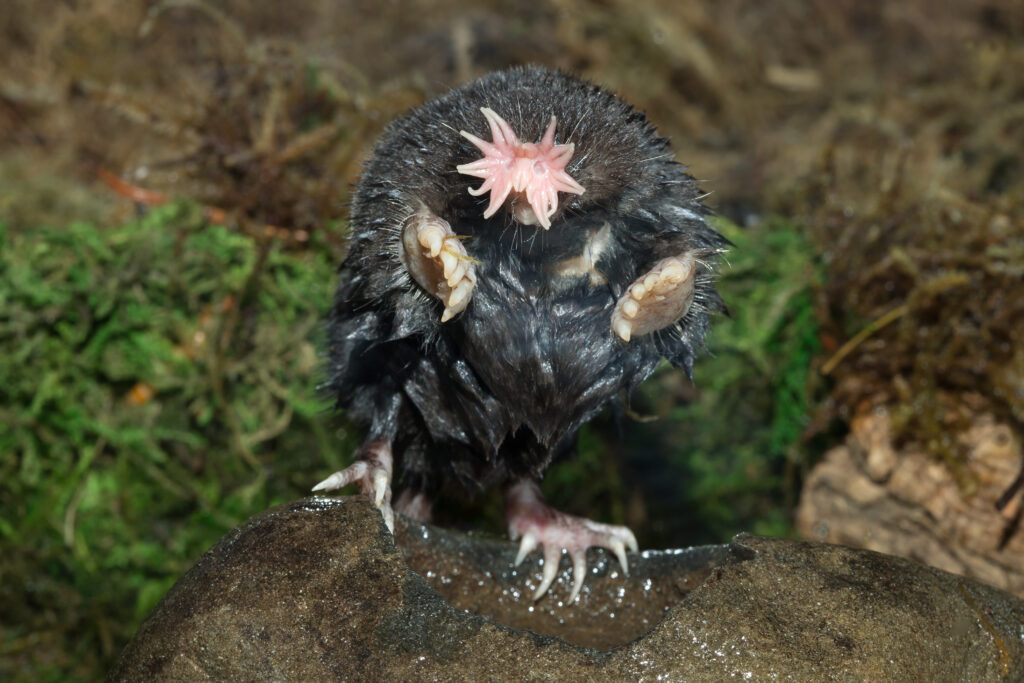
The fleshy pink area is the nose of the Star-nosed Mole, Condylura cristata, as it faces the camera (© Agnieszka Bacal / Shutterstock)
The Star-nosed Mole, Condylura cristata, is the most unusual of the U.S. mole species. That pink thing in the center of the snout above is eleven pairs of fleshy sensory receptors they use for feeling their way around and finding food. They’re covered with more than 25,000 touch-sensitive domes. The sensitivity of their nose allows them to find, catch, and eat food faster than the human eye can follow.
These moles are only about 7.6 inches (19 mm) in length and weigh 1.8 ounces (50 g ). They’re semi-aquatic and found in the northern parts of the U.S. Besides pretty lawns, they’re harmful only to worms and insects.
Shrews, family Soricidae
Shrews have the highest brain-to-body mass ratio of all animals (including humans). A high metabolism drives them to eat nearly their own body weight in food per day. They’re beneficial predators of grubs, snails, insects, and even mice. Don’t handle them—some have a venomous, painful bite.
The Southern Short-tailed Shrew, Blarina carolinensis, inhabits the eastern U.S. They stay active in winter, living in underground burrows and traveling in subnivian spaces when it snows. They have more fur and a shorter tail than mice. Their diet is different, too. Shrews eat meat, while mice occasionally eat meat, but are mainly herbivores.
Northern Short-tailed Shrews, Blarina breyicauda, inhabit fields, forests, and gardens in the northeastern U.S. and southeastern Canada. Like bats, they use echolocation (not to find food, but to explore their habitat). Always ravenously hungry, they eat their own body weight or more in food per day. Their saliva is venomous, which means a painful bite for humans and a deadly one for tiny animals. They live in tidy tunnels with separate latrine, food, and nesting areas.



